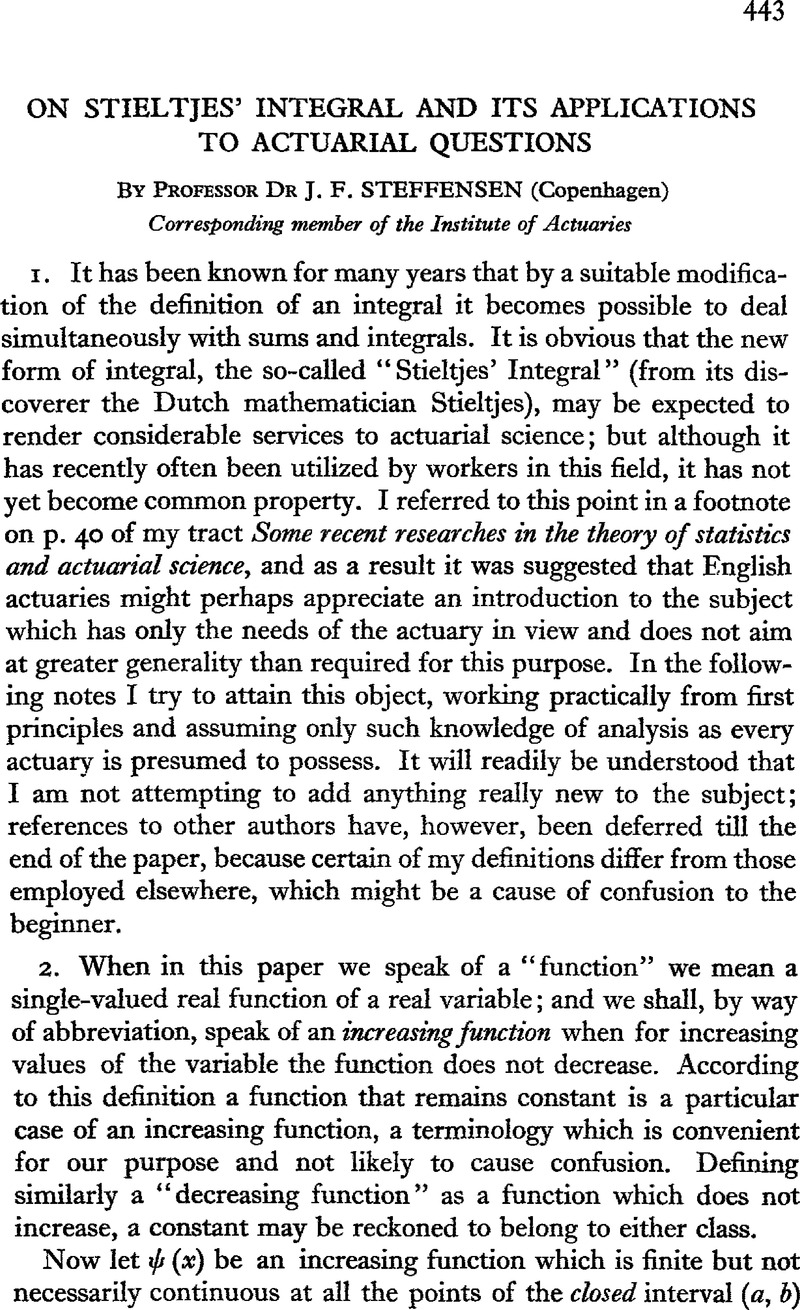Published online by Cambridge University Press: 18 August 2016

page 445 note * That is, there are no A points to the right of α which is either an A point or has A points infinitely close to the left of itself.
page 461 note * J.I.A. vol. lxii, p. 100.
page 463 note * Many actuaries would probably also in that case “calculate μx
” by one of the usual formulas, such as ![]() not realizing that they are not approximating to anything but are attributing to the graph properties which it does not possess.
not realizing that they are not approximating to anything but are attributing to the graph properties which it does not possess.
If the edge of a razor blade is put under a microscrope the outline will appear to be the more ragged the more powerful the microscope is, and it will be understood that {f (x + h) − f (x − h)}/ 2h, as h tends to zero, does not approach any limit, because it oscillates between very large (perhaps infinite) limits. But this means that f ′ (x) does not exist.
page 464 note * It seems, therefore, better (and sufficiently distinct) to write Iāx instead of employing the usual notation (Iāx ).
page 466 note * See, for instance, the author's book Interpolation, § 11, formula (8).
page 467 note * Another inequality of a similar nature has been dealt with by Stieltjes' integral by P. Veress in his paper “On certain inequalities by Steffensen” (Skandinavisk Aktuarietidskrift, vol. ix, 1926, p. 113). The definition of Stieltjes' integral employed by Veress differs slightly from mine.
page 476 note * Steffensen, Interpolation, § 10, formulas (23) and (25). See also a Note by G. J. Lidstone in J.I.A. vol. xliv, p. 403. We confine our attention here to functions of one variable, as we have not dealt with Stieltjes' integral for two variables.
page 481 note * Desirous as I am of using the international notation, I find it hard to write Q instead of q merely because t can exceed unity. I think it safe to assert that in no other subject would it be required of anybody to write f (t) when o < t < 1, but F (t) when larger intervals are concerned.